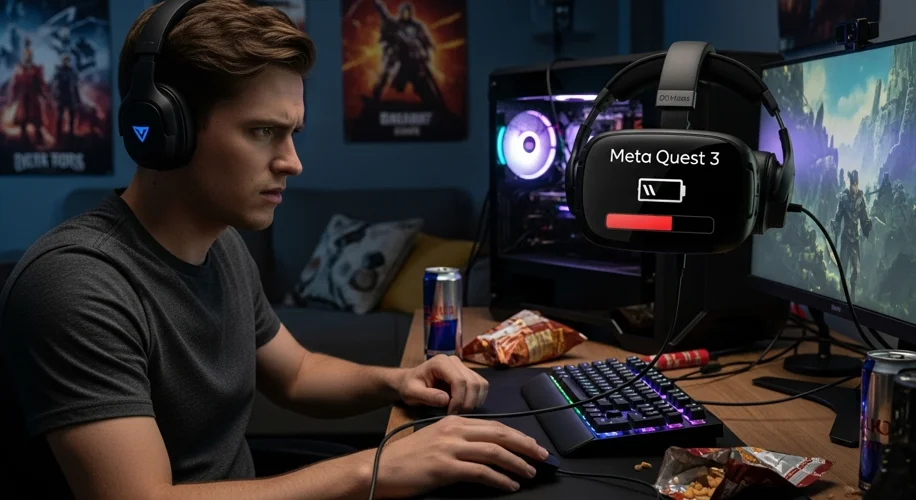Okay, so hear me out. If you’re anything like me, and you’ve jumped into the Quest 3 hype train, you’ve probably tried plugging it into your PC to get that sweet, sweet PCVR experience. It’s awesome, right? But then you notice it: your battery isn’t just not charging, it’s actively draining, even when plugged in. Seriously, what gives?
Let’s be real, this is a super frustrating issue. We want to play for hours, dive into virtual worlds, maybe even get some work done in VR (don’t judge!), but hitting that low battery warning when you’re tethered to your gaming rig feels like a total buzzkill. As someone knee-deep in computer engineering and having tinkered with VR startups, I’ve seen this problem pop up more than I’d like.
So, why is this happening? It boils down to a few key things related to power delivery and data transfer.
- USB Power Output Limitations: Not all USB ports are created equal. Your PC’s USB ports, especially older ones or those on less powerful machines, might not be providing enough consistent power to charge the Quest 3 while it’s actively running demanding PCVR applications. The headset needs a significant amount of power to run its own systems, drive the displays, and process the VR data stream, all while simultaneously trying to charge. If the power coming in is less than the power going out, you get that dreaded drain.
-
Data vs. Power Prioritization: When you connect your Quest 3 to your PC via USB, the connection is doing double duty: transferring data (for PCVR) and attempting to charge the battery. Sometimes, the system prioritizes data transfer, or the power delivery isn’t robust enough to handle both tasks efficiently. This means the charging current is too low to overcome the power consumption.
-
Cable Quality: Even with a good USB port, the cable itself can be a bottleneck. Cheaper or older USB cables might not be rated for the higher power delivery (HPD) needed for devices like the Quest 3, especially when combined with high-speed data transfer. You need a cable that’s specifically designed to handle both.
What does this mean for us?
It essentially means that for many users, connecting their Quest 3 to a PC via USB for PCVR is a recipe for a slowly dying battery, not a charging session. It makes those long VR gaming marathons a bit trickier if you’re relying solely on the USB connection for power.
This is a pretty relevant problem for anyone deep into VR gaming or creative work on their headset. We’re investing in these powerful devices, and the expectation is that we can use them seamlessly. When a core function like charging while playing is compromised, it’s a major bummer.
So, what can you do? Well, direct charging via USB while playing PCVR is often not the most reliable solution. For the best experience, especially for extended sessions, relying on a dedicated charging solution or managing your playtime might be necessary for now. I’m still experimenting with different USB-C cables and PC configurations, so definitely drop your experiences and any workarounds in the comments below. Let’s figure this out together!
What’s your setup, and are you seeing similar issues? Hit me up in the comments!

